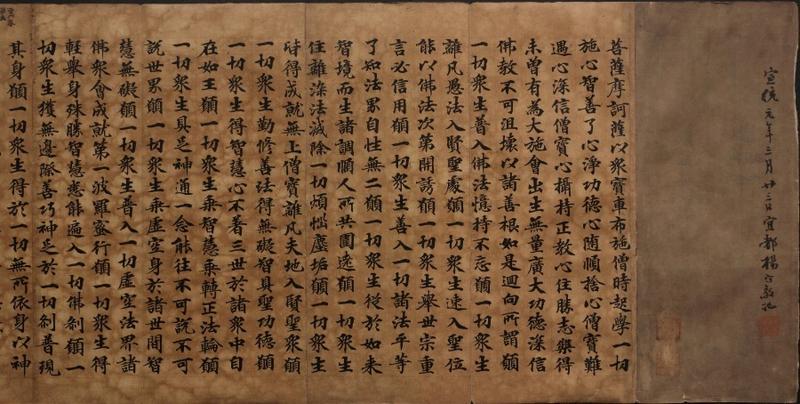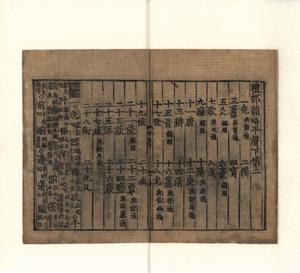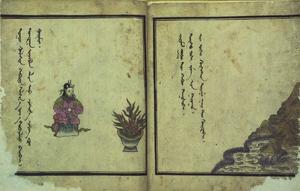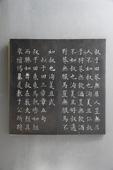 Avatamsaka Sutra, a Northen Song Dynasty Buddhist manuscript, housed in Hubei Provincial Library. (PHOTO PROVIDED TO CHINA DAILY)
Avatamsaka Sutra, a Northen Song Dynasty Buddhist manuscript, housed in Hubei Provincial Library. (PHOTO PROVIDED TO CHINA DAILY)
They may be flimsy, they are certainly not solid or weighty. But they are treasures nonetheless and these books showcase the uninterrupted lineage of Chinese civilization.
Earlier this month, the State Council, China's Cabinet, released the sixth list for the national directory of precious ancient books, including 752 new entries of major historical significance.
Applications for recognized status to be inscribed in the list began in 2018, and the Ministry of Culture and Tourism organized 86 top-tier experts, working all over the country to evaluate the 3,981 candidate books through rounds of appraisal, starting from early 2019 to September, according to Chen Binbin, an inspector from the ministry.
A rigid academic attitude was maintained during the process.
"The panel had a close-up inspection on the candidates one by one," Chen says at a news conference in Beijing, hosted by the ministry, on Friday. "If there was a dispute among experts on a specific edition or understanding of contents, we would halt inscribing it onto the list.
"We would rather leave an empty position there than make a mistake," he says.
Indisputably, the finally inscribed works are outstanding examples.
 The Bodhisattva Maitreya's Previous Life in Tusita Heaven (first volume). (PHOTO PROVIDED TO CHINA DAILY)
The Bodhisattva Maitreya's Previous Life in Tusita Heaven (first volume). (PHOTO PROVIDED TO CHINA DAILY)
From a 10th-century Buddhist sutra, which is the earliest-known dated printed work in China, to the one-millennium-old printed official dictionary of poetic rhythm, this relatively short sixth list-compared with the total 12,274 items being included in the previous five-is full of heavyweight stars.
The Bodhisattva Maitreya's Previous Life in Tusita Heaven (first volume), was printed in 927 during the Five Dynasties and Ten Kingdoms period (907-960). The National Library of China collected it in 2015.
"It's also a rare physical proof of early-stage printed work anywhere in the world," Rao Quan, the director of the national library, says.
This sutra is also the world's second-oldest known dated printed work, only after the Diamond Sutra. That Buddhist scripture printed in 868 is also from China, and is now a collection of the British Library.
 Libu Yunlue. (PHOTO PROVIDED TO CHINA DAILY)
Libu Yunlue. (PHOTO PROVIDED TO CHINA DAILY)
Another highlight in the list, Libu Yunlue (or "the concise rhymes from the Ministry of Rites"), was released by the government of the Northern Song Dynasty (960-1127) for preparation of national-level examinations.
It was collected by Nanjing Library in Jiangsu province in 2013, bought from an auction, and is also widely hailed by academia as "one of the biggest discoveries of ancient Chinese books in recent years".
According to Quan Qin, deputy director of Nanjing Library, this copy of Libu Yunlue, compiled between 1037 and 1066, is the earliest surviving printed edition of the book, and is also the only remaining example of that edition.
 A colored map of Beijing drawn during the reign of Daoguang (1821-50). (PHOTO PROVIDED TO CHINA DAILY)
A colored map of Beijing drawn during the reign of Daoguang (1821-50). (PHOTO PROVIDED TO CHINA DAILY)
The 700-odd newly titled treasures embrace a wide variety of styles.
Li Zhizhong, the chief expert of the appraisal committee for candidates of the list, explains the books are basically categorized into four varieties, following the traditional classification of books in ancient time: Confucian classics (jing), history (shi), writings on various philosophies and religious scriptures (zi), and poetry and literature (ji).
Nevertheless, he adds that other varieties like maps, books written in languages of non-Han ethnic groups, stone rubbings, writings on silk pieces or bamboo or wooden slips, among others are also included.
A colorful map of Beijing, drawn during the reign of Daoguang (1821-50), has a detailed and comprehensive recording of the capital's road networks, city layout, princes' mansions, government offices, and other key landmarks.
 Dream of the Red Chamber written in Mongolian. (PHOTO PROVIDED TO CHINA DAILY)
Dream of the Red Chamber written in Mongolian. (PHOTO PROVIDED TO CHINA DAILY)
And Water Margin, Journey to the West, and Dream of the Red Chamber-three classic ancient Chinese novels-written in Mongolian, shows close connection and frequent cultural communication among different ethnic groups, Rao from the national library notes.
In China, "ancient books" are usually defined as those published before 1912, the end of Chinese monarchy. However, for books in non-Han languages, the time span could also be expanded to before 1949.
Some precious books in foreign languages are also included in the directory. A highlight is a copy of the first volume of Das Kapital by Karl Marx, which was printed in Hamburg in 1867.
Recent surveys of ancient books also led to key discoveries among collections of museums and libraries.
For example, Rao cites that, during reign of Qianlong (1736-95) of the Qing Dynasty (1644-1911), the emperor ordered a rubbing replica of the Confucian classics, which was carved on the stone stele in the Guozijian (the imperial college) in Beijing. The rubbing was bestowed to the Confucius' Family Mansion in Qufu, Shandong province, in 1796.
 A Qing Dynasty stone rubbing replica of Confucian classics from Qufu, Shandong. (PHOTO PROVIDED TO CHINA DAILY)
A Qing Dynasty stone rubbing replica of Confucian classics from Qufu, Shandong. (PHOTO PROVIDED TO CHINA DAILY)
It was rediscovered last year when researchers checked the inventory of a museum in Qufu, and was selected for the directory this time. As the original stele in Beijing has been partially eroded due to its age, this replica on paper is hugely significant for academic reference.
According to Chen from the Ministry of Culture and Tourism, it is estimated that China has more than 30 million copies of ancient books, and about 90 percent of them have been registered in details in the national survey.
China has also established 12 national-level restoration centers of ancient books to rescue the aging pages. And 203 libraries, museums, universities, and other conservation institutions-including 23 newly titled this month-are listed as national-level key venues on protection of ancient books.
Digitized copies of about 72,000 varieties of ancient books have been uploaded to a national database for public access. Chen also says more ancient Chinese books, which were lost to overseas during war or for other historical reasons, can be "brought home" in digital forms to fill in the gaps in domestic studies.


